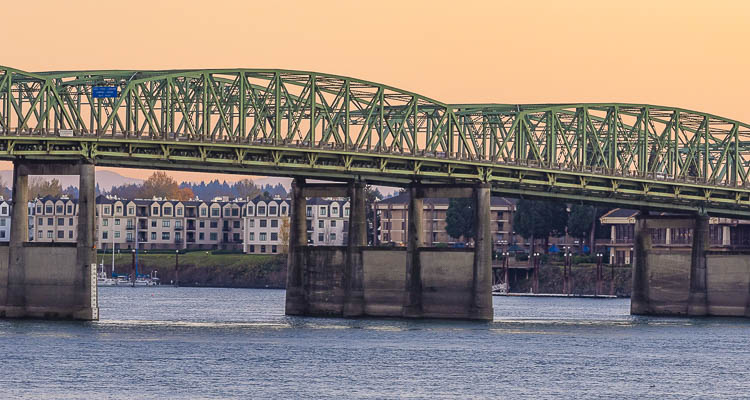
The draft EIS was originally expected to be released last year, but as of now has not been completed
TJ Martinell
The Center Square Washington
In 2020, officials with the Interstate Bridge Replacement Program to build a new I-5 Bridge across the Columbia River between Vancouver and Portland anticipated construction would begin in 2025. However, they have now pushed that timeline into 2026 due to delays with planning necessary before bridge designing work can occur.
Before construction can begin and federal funding can be obtained, the program will need to get approval for their plans with the U.S. Coast Guard and complete an environmental impact statement. The draft EIS was originally expected to be released last year, but as of now has not been completed, though program officials say it will be available later this year.
“We are committed to getting that done by late next year,” Project Administrator Greg Johnson told the Joint Oregon-Washington Legislative Action Committee at its Monday meeting.
When asked as to the reason for the project delays, Johnson said it was due to disagreements with federal agencies regarding the traffic modeling used in their plans.
“The federal transit and federal highway administration believes that some models across the country have been over-predicting ridership and we have to resolve that issue,” he added. “This is very common when you have complex projects and especially our project is complicated by having two federal leads, both Federal Highway Administration and Federal Transit Authority.”
However, the delays drew criticism during public comment by Joe Cortright, who runs a think tank called City Observatory. He told the committee that the “it’s a mark of the incompetence of the staff that they haven’t met their deadline to complete the DSCIS (draft supplemental environmental impact statement) in two years and that they failed to deal with easily foreseeable modeling issues.”
He added that the traffic modeling issue “is a risk that they [program staff] have known about for years. Traffic modeling is not a minor detail. It is foundational to every aspect of this project, is foundational to establishing how large it is, to understanding what its environmental impacts are to all of the claims that they make about traffic and how this will relieve or affect traffic.”
This report was first published by The Center Square Washington.
Also read:
- Delays expected on Northwest 99th Street during water quality project constructionClark County will begin construction in July to install a stormwater filter vault on NW 99th Street. Drivers can expect delays, but lanes will remain open during the work.
- POLL: What’s the biggest concern you have with the current I-5 Bridge replacement plan?As costs rise and Oregon’s funding fails, concerns mount over the current I-5 Bridge replacement plan. Clark County Today asks readers: what’s your biggest concern?
- Plan ahead for ramp closures on I-5 near Ridgefield, July 8-9Travelers on northbound I-5 near Ridgefield should prepare for ramp closures July 8–9 as WSDOT crews conduct final testing of new wrong-way driving detection systems. The closures affect exits 9 and 11, including the Gee Creek Rest Area.
- Oregon DOT director calls transportation funding bill failure ‘shocking,’ warns of layoffsODOT Director Kris Strickler warned staff that up to 700 layoffs are imminent after lawmakers failed to pass a transportation funding bill, deepening the agency’s $300 million shortfall.
- New crossing opens over SR 500 in VancouverWSDOT has opened a new pedestrian and bike bridge over SR 500 in Vancouver, restoring direct and ADA-accessible access for people walking, biking, or rolling.









